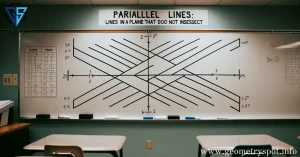Unlock the Secrets of Geometry: 11 Mind-Blowing Facts About the Parallel Lines Property Theorem
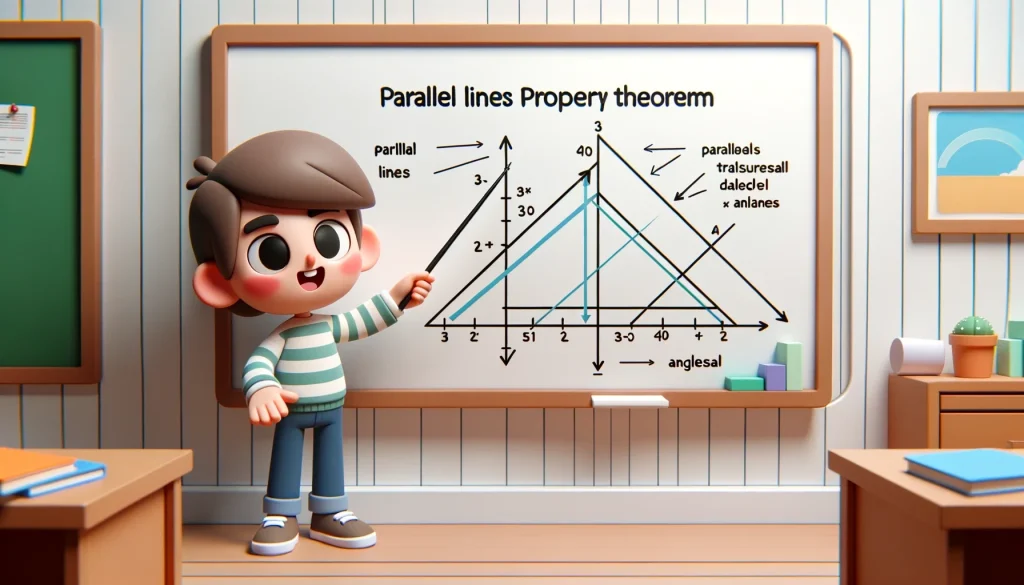
If you’ve ever gazed at a set of railroad tracks stretching into the distance, you’ve witnessed the beauty of parallel lines. These simple lines have captivated the minds of mathematicians, artists, and thinkers for centuries. But why are they so significant? The answer lies in the Parallel Lines Property Theorem, a key principle that governs these straight figures and has a multitude of applications. Stick around as we unravel the magic and utility of parallel lines!
Understanding the Basics of Parallel Lines
Essentials of Line Properties
Let’s get down to the brass tacks. In geometry, a line is a straight one-dimensional figure that extends infinitely in both directions. Now, when you have two lines that never meet however far they’re extended, voila, you’ve got parallel lines! But how do we know they will never meet? That’s the crux of the Parallel Lines Property Theorem, which assures us that these lines will remain an equal distance apart, forever and ever. Yep, it’s like a never-ending geometric friendship.
Core Definitions and Terminology
You might hear a lot of fancy jargon when people talk about parallel lines and the associated theorems. Words like “transversals,” “alternate angles,” and “corresponding angles” can sound intimidating. But don’t sweat it; these terms are just geometry’s way of making sure everyone’s on the same page. Transversals are lines that intersect parallel lines, and these intersections create various angles. Alternate angles are angles opposite each other when a transversal cuts through two lines. Corresponding angles are angles that occupy the same relative position at each intersection where a straight line crosses two others.
Historical Background of the Parallel Lines Property Theorem
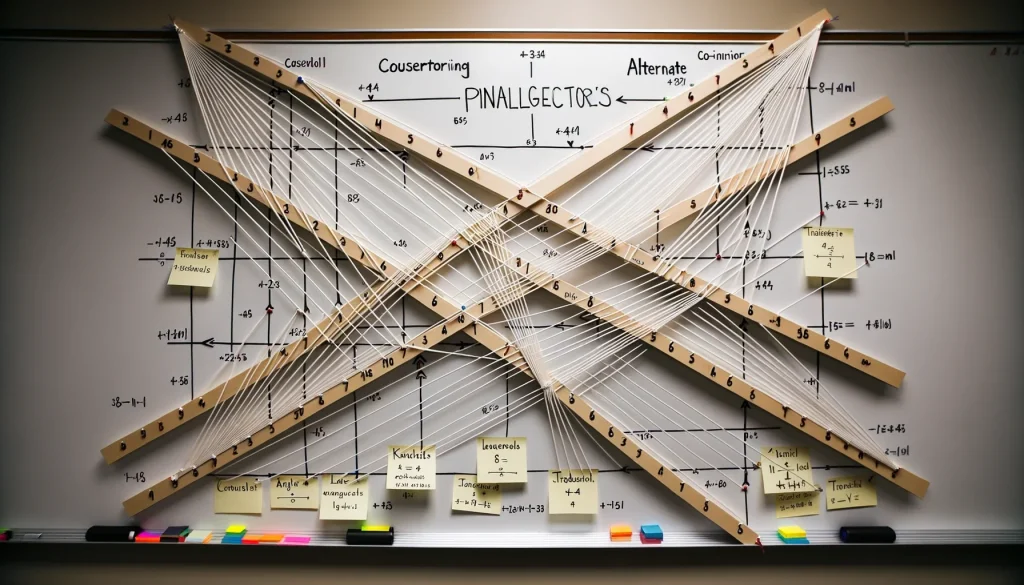
Euclid and His Impact
When talking about parallel lines, it’s hard not to give a tip of the hat to Euclid. This ancient Greek mathematician put parallel lines on the map (quite literally!) with his groundbreaking book, “Elements.” Euclid provided postulates and proofs that laid the foundation for understanding parallel lines, and his work is still a crucial part of geometry Spot curriculums around the world.
The Evolution Over Time
Fast-forward from Euclid’s time, and you’ll find that the concept of parallel lines has grown leaps and bounds. Modern mathematicians have expanded on Euclid’s ideas, applying the Parallel Lines Property Theorem to solve complex problems in areas like engineering, computer science, and even philosophy. It’s like upgrading from a vintage car to a modern-day electric vehicle!
The Core of Parallel Lines Property Theorem

The Angle Pair Theorems
The crux of the Parallel Lines Property Theorem centers around the fascinating Angle Pair Theorems. What are they, you ask? These theorems describe the unique relationships between the angles formed when a transversal intersects parallel lines. There are several types, including corresponding angles, alternate interior angles, and consecutive interior angles, each with its own set of rules. It’s like a code that cracks open the mystery of parallel lines!
How it Relates to Transversals
Now, what role do transversals play? Think of a transversal as a messenger, delivering crucial information about the relationship between parallel lines. When a transversal intersects parallel lines, it gives rise to several angles whose properties are defined by the Parallel Lines Property Theorem. Understanding the behavior of these angles is crucial to grasping the essence of parallel lines. It’s as if the transversal is the key that unlocks the geometric secrets held by parallel lines!
Real-World Applications of the Parallel Lines Property Theorem
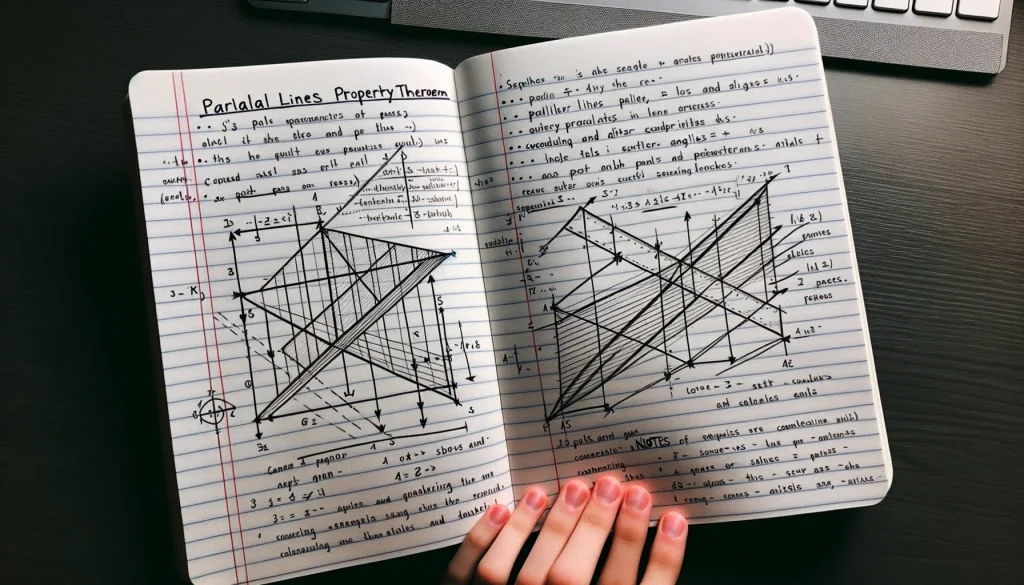
Let’s not beat around the bush. Math and geometry can sometimes seem like a maze of confusing terms and abstract concepts. But the real kicker is the Parallel Lines Property Theorem isn’t just a fascinating topic for the ivory tower; it’s something that touches our daily lives in ways you wouldn’t believe. From the buildings we inhabit to the art we admire, parallel lines are all around us. So, let’s dive into some everyday applications.
In Architecture
Here’s the deal: architects love parallel lines. Imagine a skyscraper. Those towering vertical lines that seem to stretch into the heavens? They’re parallel. And it’s the Parallel Lines Property Theorem that ensures the building stands straight. Architects utilize the theorem to ensure that vertical beams are perfectly parallel, maintaining the structural integrity of the building. It’s like the theorem is the unsung hero, ensuring our artificial wonders don’t lean over and topple down!
In Engineering
If you think the Parallel Lines Property Theorem doesn’t influence engineering, think again! From highway construction to railway tracks, parallel lines are a vital component. Engineers rely on this theorem to create designs that are both functional and safe. For instance, the parallel lines of railway tracks are meticulously measured to ensure that they remain equidistant, allowing trains to traverse without a hitch. That’s right; it’s the theorem that keeps our journeys smooth and straight!
In Art
You might not associate geometry with the Mona Lisa, but the art world has a love affair with parallel lines, too! Take linear perspective, for example. Artists use parallel lines to create the illusion of depth and volume in a two-dimensional space. So, the next time you’re mesmerized by a painting’s sense of depth, remember that it’s the Parallel Lines Property Theorem working its magic behind the scenes. A round of applause for geometry, the unsung hero in the art world!
Parallel Lines in Coordinate Geometry
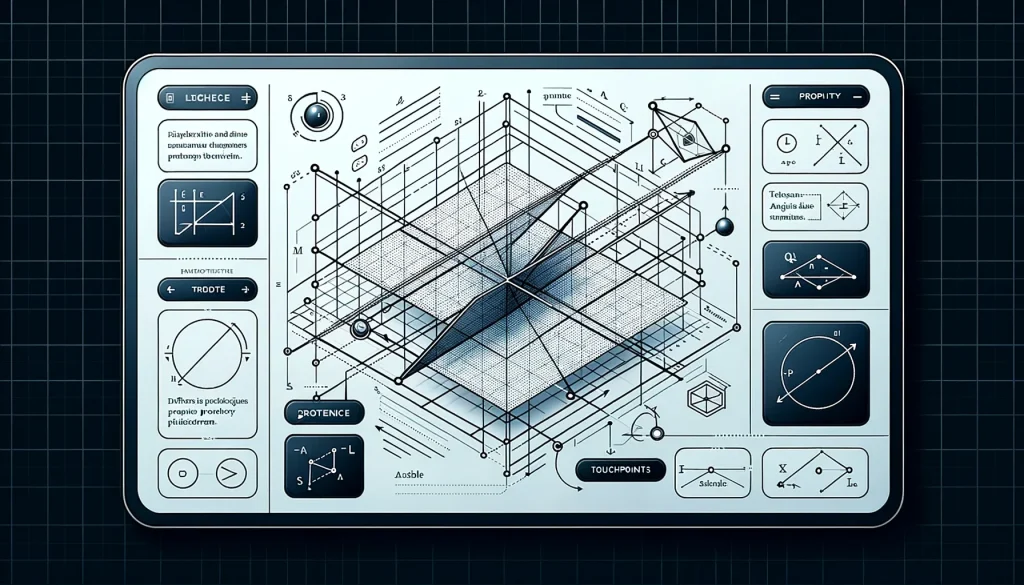
The Role of Slopes
When it comes to coordinate geometry, slopes are the talk of the town. You see, parallel lines have the same slope. This shared trait ensures that they never meet, no matter how far they extend. Knowing the slope allows you to classify lines easily. It’s as if the slope is the lines’ fingerprint, unique yet revealing their kinship when parallel!
Equations and Graphs
Are you a fan of graphing equations? Then, you’ll be thrilled to know that equations for parallel lines often appear as straight lines on a Cartesian plane. These lines have the same slope but different y-intercepts. That means they run side-by-side, like partners in crime, forever maintaining their distance but never intersecting.
The Intersection of Parallel Lines and Polygons
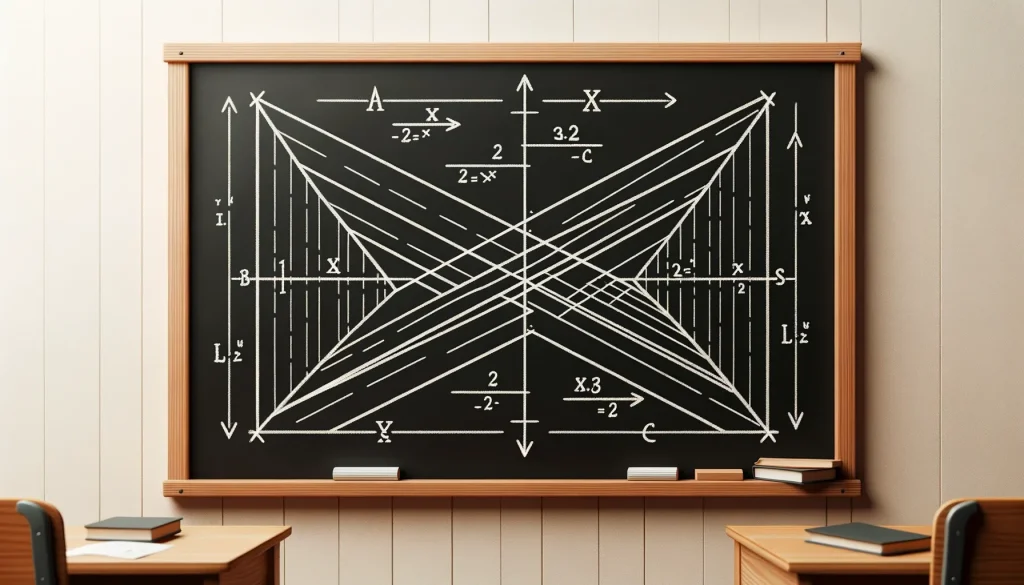
In Triangles
Triangles may not seem like the go-to shape when discussing parallel lines, but you’d be surprised. In particular, the bases of isosceles and equilateral triangles are parallel to their corresponding altitudes. This geometric relationship is entirely rooted in the Parallel Lines Property Theorem. It’s as if triangles are throwing us a geometric curveball!
In Quadrilaterals
If you find quadrilaterals like rectangles and parallelograms fascinating, then hold on to your hats! These shapes are chock-full of parallel lines. In a rectangle, opposite sides are parallel, as are their diagonals. Similarly, in a parallelogram, opposite sides are parallel by definition. So, quadrilaterals are the poster children for the Parallel Lines Property Theorem!
Mathematical Proofs Supporting the Theorem
Classic Approaches
Proofs are the bread and butter of geometry. They give credence to the theorems we discuss, including the Parallel Lines Property Theorem. Classic approaches often involve proving the alternate interior angles or corresponding angles to be equal when the lines of a transversal cut. These proofs serve as the mathematical backbone that reinforces our understanding and applications of parallel lines.
Modern Variations
Non-Euclidean Geometry
Hold on to your seats because we’re about to venture beyond the Euclidean realm. You see, Euclidean geometry is like the comfort food of the geometry world. It’s what we all learned in school. But the world of parallel lines isn’t limited to Euclid’s postulates. In non-Euclidean geometry, particularly hyperbolic geometry, parallel lines behave differently. There can be multiple lines that are “parallel” to a given line, and yet none of them intersect the original line. It’s a mind-bender, but it’s essential for understanding the geometry of curved surfaces and even the shape of the universe!
Popular Misconceptions
Ah, misconceptions. We’ve all had them at some point. One popular myth is that parallel lines must be straight. That is not necessarily true, especially when you’re talking non-Euclidean geometry. In this realm, lines can curve and still be parallel. It’s like they’re dancing to their tune! So, don’t be too quick to box parallel lines into your preconceived notions.
Resources for Further Learning
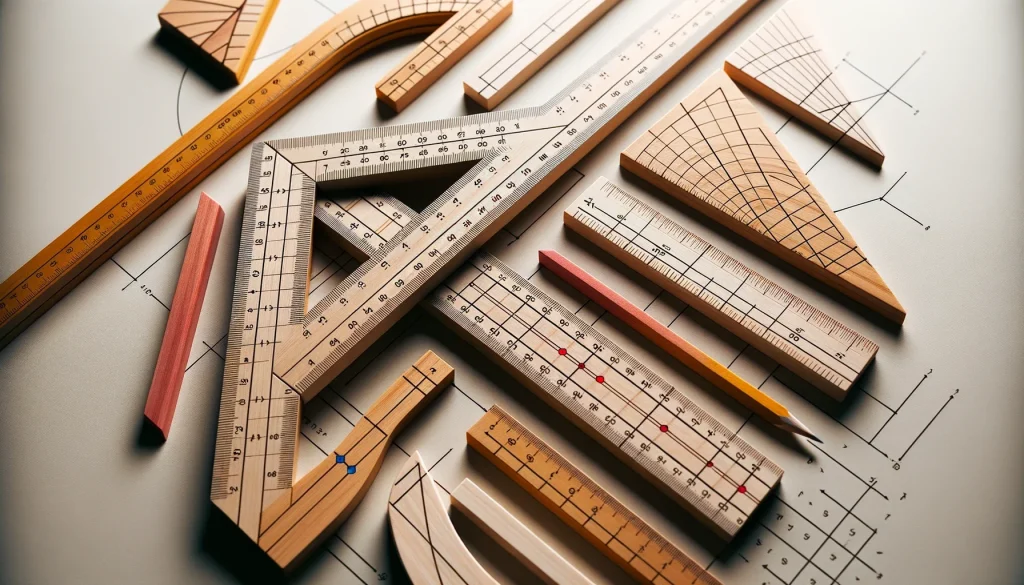
Books
Hungry for more? Dive into some reading! Books like “Geometry For Dummies” or “Introduction to Geometry” by Richard Rusczyk are great starting points. They break down complicated theorems, including the Parallel Lines Property Theorem, into digestible nuggets.
Online Courses
Online courses are another excellent resource. Websites like Khan Academy, Coursera, or Udemy offer specialized courses that cover everything from the basics to advanced theorems. It’s like having a geometry buffet right at your fingertips!
Proof: Theorem 1
Are you ready for some proof action? Let’s start with one that revolves around alternate interior angles, when a transversal cuts two parallel lines, the alternate interior angles are equal. To prove this, you often extend one of the parallel lines to create equal corresponding angles, and voila! You have your proof. It’s a beautiful example of geometry’s elegance.
Proof: Theorem 2
Here’s another gem. This one proves that when two lines are parallel, their opposite angles are equal when intersected by a transversal. Again, it’s all about using established angle relationships and a bit of algebraic manipulation to show that the theorem holds water. It’s like solving a complex jigsaw puzzle, one piece at a time.
Proof: Theorem 3
Last but not least, let’s talk about corresponding angles when a transversal cuts two parallel lines, the corresponding angles are equal. Proving this involves much of the same tactics as the previous proofs, but it adds yet another layer to our understanding of why parallel lines behave the way they do.
Replenish:
So, we’ve covered a lot of ground here. The world of parallel lines is both rich and complex, and we’ve only scratched the surface. The more you learn, the more there is to discover. So, take some time to replenish your geometric knowledge. Jump into a book, enroll in a course, or even better, start drawing some parallel lines yourself. Who knows what you’ll uncover?
Conclusion: Why the Parallel Lines Property Theorem Matters
Alright, folks, we’ve reached the end of this journey. By now, you should have a strong understanding of the importance of the Parallel Lines Property Theorem in both academia and everyday life. It’s more than just lines on paper it’s the underlying principle that shapes our world.





